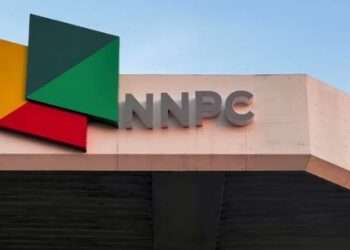The National Health Insurance Authority (NHIA) has released nearly GHS 260 million in claims payments to credentialed healthcare providers across the country in a move it says reinforces its resolve to maintain a stable, functioning national health insurance system.
According to the data released by the NHIA’s Corporate Affairs Directorate, the Authority, under the leadership of its Chief Executive, Dr. Victor Asare Bampoe, disbursed a total of GHS 259,546,601.77 to facilities spanning public, private, mission, and quasi-public sectors.
“The recent payments translate to over One Billion Ghana Cedis (GHS 1,103,028,808.59) paid this year (2025) in claims to credentialed healthcare providers nationwide”
Corporate Affairs Directorate, NHIA
The NHIA revealed how the distribution of funds, weighted towards public and private facilities, and made within a 21-day window in May, adds to what is now over GHS 1.1 billion paid out to health providers so far this year.
Of the total sum, public health facilities received GHS 112,607,239.74, which constitutes 43 percent of the overall payment. Private facilities followed closely, with an allocation of GHS 104,643,070.75, representing 40 percent.
Mission facilities were allocated GHS 40,015,892.20, amounting to 15 percent, while quasi-public facilities received GHS 2,280,399.08, which is 1 percent of the total.

“This significant disbursement demonstrates the NHIA’s unwavering commitment to sustaining the National Health Insurance Scheme (NHIS) and ensuring that healthcare providers are resourced and motivated to deliver quality services to our cherished members”
Corporate Affairs Directorate, NHIA
Cumulative Claims
The scale and timing of these payments, amounting to 1 billion Ghana Cedis, are being positioned by the Authority as a marker of administrative progress and reliability in the financing of healthcare delivery.
“We thank our stakeholders for their continued support and assure the public of our dedication to transparency, accountability, and timely payments,” the statement continued.
Since assuming office, Dr. Bampoe has emphasized efficiency and accountability in managing the NHIS. Under his watch, the NHIA is accelerating payments and enhancing provider relations, two long-standing concerns that have troubled Ghana’s healthcare financing framework.
“The NHIA remains focused on improving efficiency, enhancing provider relations, and delivering on its mandate to ensure financial access to quality healthcare for all residents of Ghana”
Corporate Affairs Directorate, NHIA

Although the NHIA has not elaborated on how it mobilized the funds for this round of payments, the consistent disbursement trend observed since January 2025 suggests improved internal systems or stronger collaboration with the Ministry of Finance under the administration.
Healthcare providers have historically cited delayed claims payments as one of the most significant bottlenecks in the delivery of timely and effective services to NHIS members. This recent release, which took just 21 days, may signal a shift in NHIA’s ability to streamline financial operations and avoid prolonged debt to service providers.
No formal statement has yet been issued by the Ghana Medical Association or private provider networks, but sector stakeholders are expected to respond to the latest payments as the trend continues.
With public confidence in the NHIS having fluctuated in recent years, especially under previous administrations, the NHIA’s current performance is likely to be a critical component of healthcare reform efforts now underway.
The consistent and timely payment of claims will also play a pivotal role in the Authority’s attempt to digitize processes and expand enrollment across the country.
As Ghana’s health insurance ecosystem continues to evolve, sustaining financial access for millions of residents remains central. While the NHIA celebrates this milestone, sector observers will be watching closely to see whether the trend holds in the second half of 2025.
READ MORE: Total Energies Unveils Largest Solar Power Cluster in Europe



















